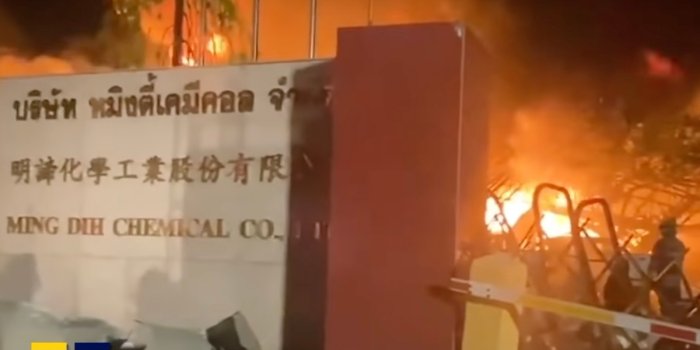K
Kathleen Martin
Guest
Drones from manufacturer DJI are valued by consumers and business users alike across a variety of applications, and now the craft are also being embraced by firefighters for their effectiveness in battling chemical blazes – among the most dangerous they face.
Though deployment of drones by services fighting catastrophic wildfires that ravaged Australia and western US states in recent years have increased generally, DJI craft in particular have played important roles in responding to infernos ignited or fed by chemicals. A good example of that was a case study on the company’s Enterprise page, which detailed how use of a DJI M300 + H20T drone equipped with thermal sensors allowed officials in Thailand to combat a deadly chemical fire – and make decisions about preventing similar conflagrations from reoccurring.
The emergency began with a large explosion at the Ming Dih Chemical factory about 20 km from Bangkok in the wee hours of July 5, 2021. Though the initial blast was violent enough to be heard five km away, the worse threat came from the estimated 50 tons of industrial chemical reserves that continued feeding the blaze that responders desperately fought for over a day. Before they could bring it under control, extensive damage had been suffered to buildings 1 km in all directions, forcing the evacuation of residents within a 5 km radius of the flames.
What turned the situation around, according to officials with the Thai Disaster Prevention and Mitigation Department called into the emergency, was the use of the DJI M300 + H20T drone, which provided critical situational awareness vis-à-vis the worst hotspots, as well as where the fire was likely to spread to next. That information was communicated by the craft’s thermal sensor, which was able to pierce the thick, black clouds of smoke and send back actionable on-the-ground data to firefighters.
Once the flames had been brought under control, that tech was swapped for a P1 high-resolution mapping sensor and an L2 that captured high-density point clouds. Using the data collected from the drone, DJI’s Terra software was able to provide officials with a sophisticated 3D model of the fire-gutted factory, which in turn enabled a detailed forensics analysis of the catastrophe.
Continue reading: https://dronedj.com/2022/02/21/dji-drones-provide-critical-help-fighting-chemical-fires/
Though deployment of drones by services fighting catastrophic wildfires that ravaged Australia and western US states in recent years have increased generally, DJI craft in particular have played important roles in responding to infernos ignited or fed by chemicals. A good example of that was a case study on the company’s Enterprise page, which detailed how use of a DJI M300 + H20T drone equipped with thermal sensors allowed officials in Thailand to combat a deadly chemical fire – and make decisions about preventing similar conflagrations from reoccurring.
The emergency began with a large explosion at the Ming Dih Chemical factory about 20 km from Bangkok in the wee hours of July 5, 2021. Though the initial blast was violent enough to be heard five km away, the worse threat came from the estimated 50 tons of industrial chemical reserves that continued feeding the blaze that responders desperately fought for over a day. Before they could bring it under control, extensive damage had been suffered to buildings 1 km in all directions, forcing the evacuation of residents within a 5 km radius of the flames.
What turned the situation around, according to officials with the Thai Disaster Prevention and Mitigation Department called into the emergency, was the use of the DJI M300 + H20T drone, which provided critical situational awareness vis-à-vis the worst hotspots, as well as where the fire was likely to spread to next. That information was communicated by the craft’s thermal sensor, which was able to pierce the thick, black clouds of smoke and send back actionable on-the-ground data to firefighters.
Once the flames had been brought under control, that tech was swapped for a P1 high-resolution mapping sensor and an L2 that captured high-density point clouds. Using the data collected from the drone, DJI’s Terra software was able to provide officials with a sophisticated 3D model of the fire-gutted factory, which in turn enabled a detailed forensics analysis of the catastrophe.
Continue reading: https://dronedj.com/2022/02/21/dji-drones-provide-critical-help-fighting-chemical-fires/

